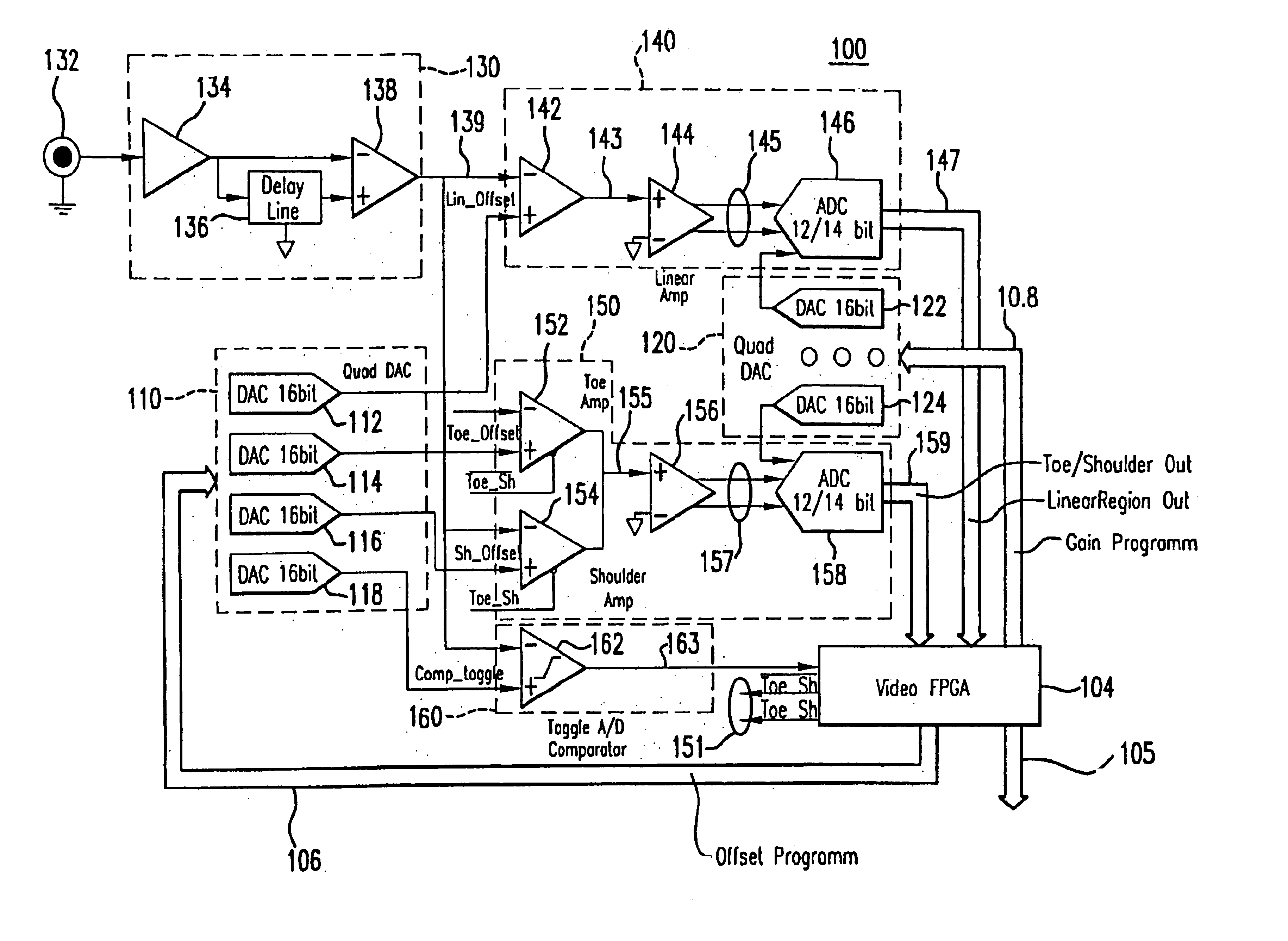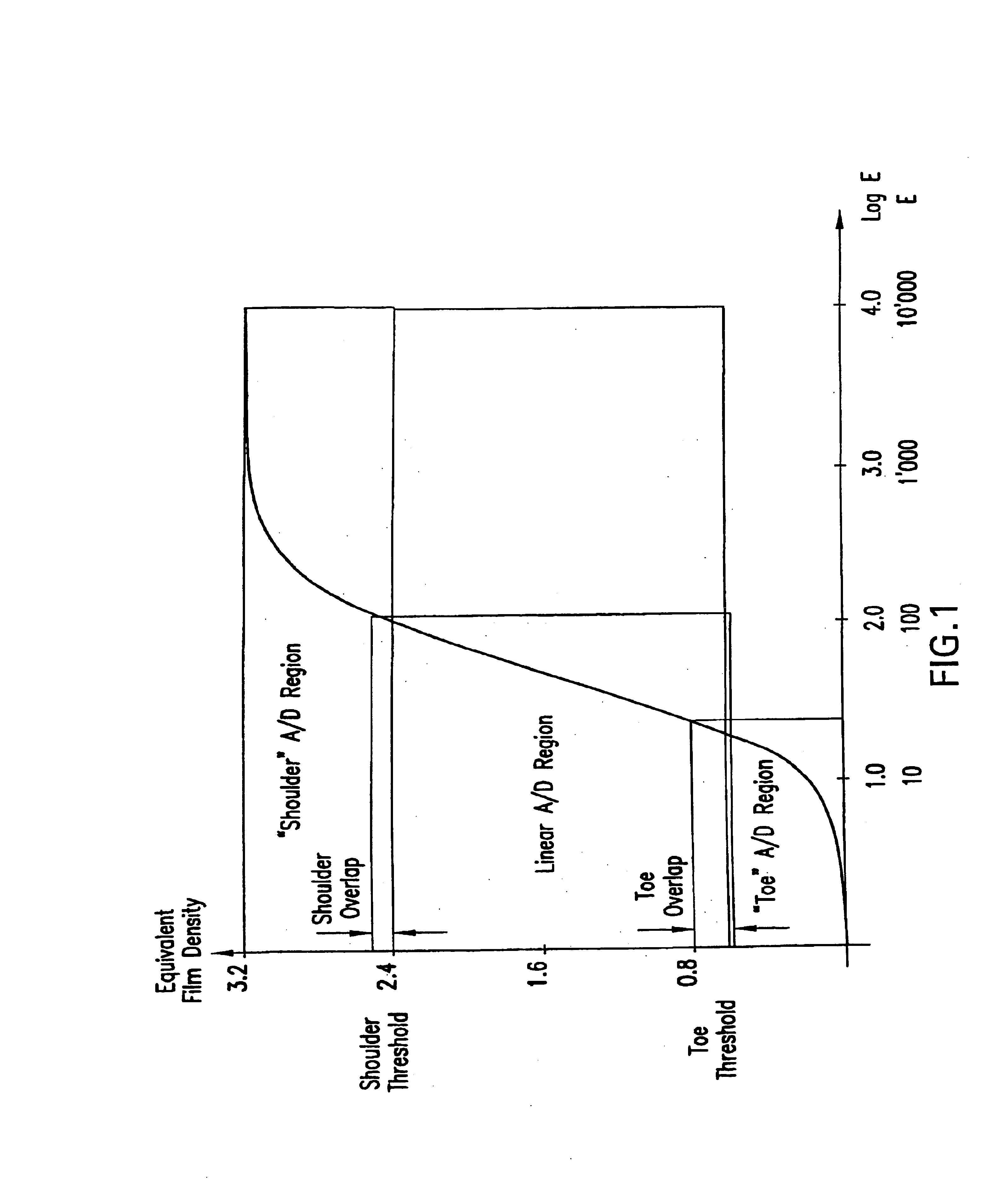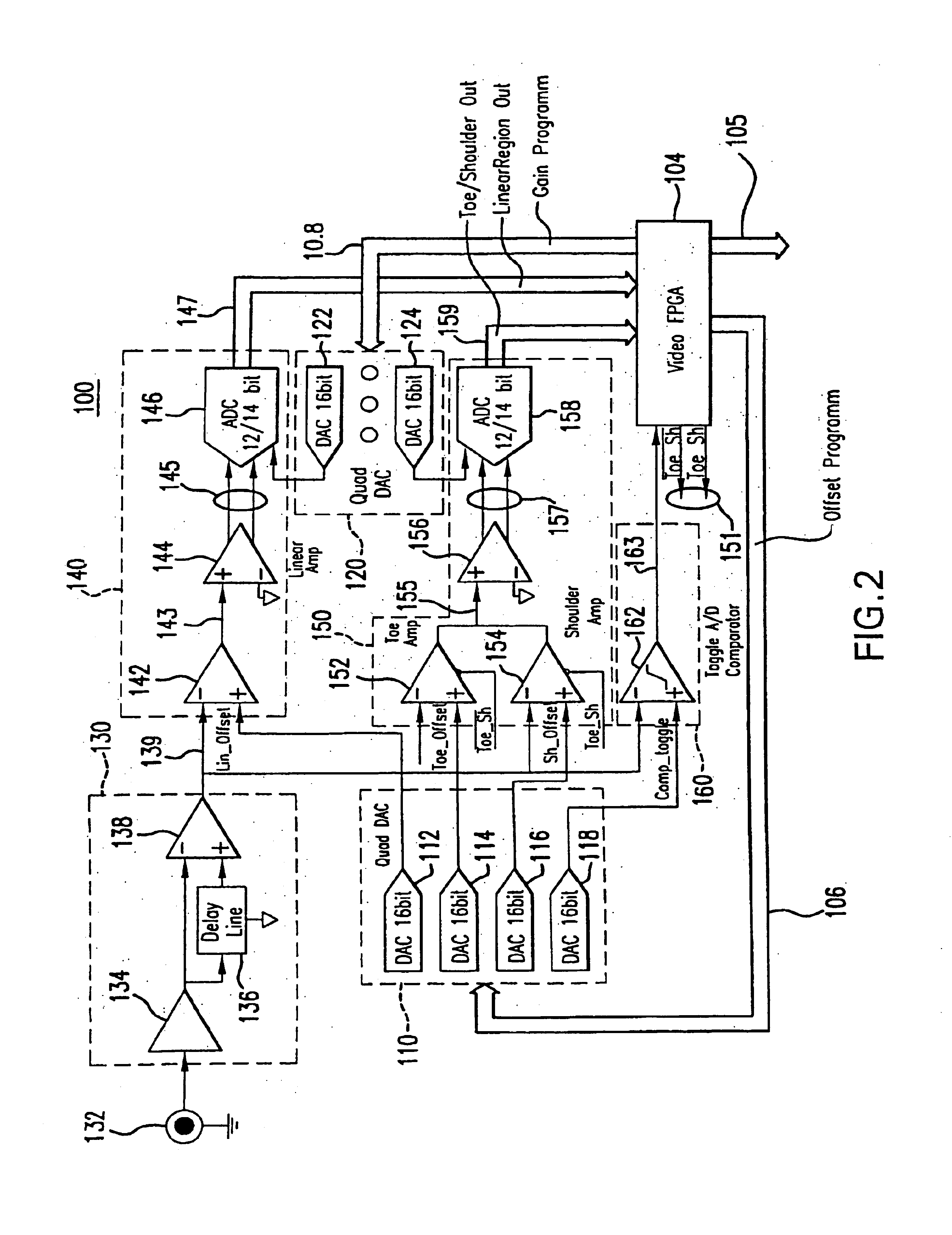Digital encoder and method of encoding high dynamic range video images
- Summary
- Abstract
- Description
- Claims
- Application Information
AI Technical Summary
Benefits of technology
Problems solved by technology
Method used
Image
Examples
Embodiment Construction
In industrial and computer imaging, one of the important performance criteria of an imaging system is the linearity of its transfer function, or response to varying light levels. However, there are a few characteristics of human vision that do not follow the same rules as machine vision. Essentially, the ability of human vision to detect intensity difference, or luminance, is not uniform over the range from black to white. The intensity discrimination of the human visual system is a nonlinear power function that decreases from black to white. It is considered that after adapting to surrounding illumination levels human vision can distinguish between different luminance levels down to about 1% of the scene's “peak white” value. At the same time, human vision adapts over an extremely wide range of viewing conditions thus making it a complex system to emulate. The following quote from “A Technical Guide to Digital Video” by Charles Poyton illustrates this point:Image coding for the rep...
PUM
 Login to View More
Login to View More Abstract
Description
Claims
Application Information
 Login to View More
Login to View More - R&D
- Intellectual Property
- Life Sciences
- Materials
- Tech Scout
- Unparalleled Data Quality
- Higher Quality Content
- 60% Fewer Hallucinations
Browse by: Latest US Patents, China's latest patents, Technical Efficacy Thesaurus, Application Domain, Technology Topic, Popular Technical Reports.
© 2025 PatSnap. All rights reserved.Legal|Privacy policy|Modern Slavery Act Transparency Statement|Sitemap|About US| Contact US: help@patsnap.com



